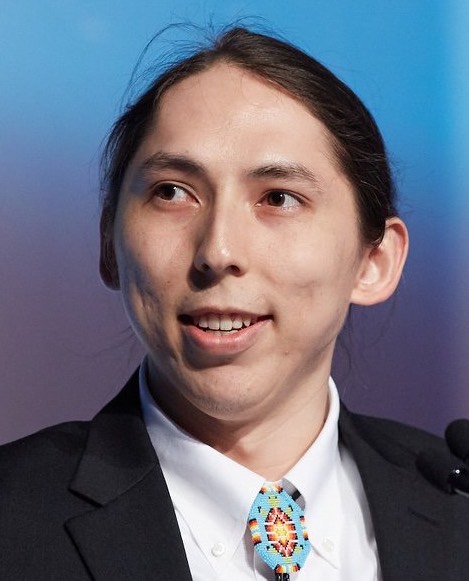- Details
- By Kyle Edwards
WASHINGTON – The Trump administration announced Thursday the approval of grants under the National Tribal Broadband Grant (NTBG) program to 23 federally recognized American Indian and Alaska Native tribes and two Navajo Nation communities to study the feasibility of developing or extending broadband services in their areas. The grants were approved by the Interior Department’s Office of Indian Energy and Economic Development (IEED).
The NTBG program is designed to spur economic development and commercial activity, create opportunities for self-employment, enhance educational resources and remote learning opportunities, and meet emergency and law enforcement needs by bringing broadband services to Native American communities that lack them.
The grants, worth a total of $1.2 million, will allow tribes to hire third-party consultants to research the potential deployment or expansion of high-speed internet transmitted through digital subscriber line (DSL), cable modem, fiber, wireless, satellite and broadband-over-power lines (BPL).
“Broadband can dramatically improve the quality of life in American Indian and Alaska Native communities,” said BIA Assistant Secretary Tara Katuk Sweeney in a statement. “Quick, convenient and reliable access to the internet is a modern necessity. Yet, tribes frequently find themselves on the wrong side of the digital divide. These grants are an important first step in bringing broadband to communities that sorely need them.”
The NTBG program received 55 proposals from tribal applicants totaling $2,658,638. Applications for the program opened in February and closed in June, and grants were awarded based on the “potential positive impacts broadband could bring to an applicant’s community,” according to a press release.
Among the approved NTBG grants, 23 of them involve studies of broadband projects located in opportunity zones, which were introduced in 2017 as part of President Donald Trump’s signature legislative achievement, the Tax Cuts and Jobs Act of 2017. Opportunity zones are designed to help economically distressed areas by incentivizing investors to direct their capital to poor communities, and in exchange they receive a break on capital gains taxes. Broadband systems would be an eligible investment under the opportunity zone program.
According to a press release, feasibility studies conducted for each tribe and funded by the NTBG grants will “assess the current broadband services, if any, that are available to each grantee’s community; engineering evaluations of new or expanded broadband services; estimates of the cost of building or expanding broadband networks; determination of the transmission medium(s) to be employed; identification of potential funding and/or financing for networks; and consideration of financial and practical risks associated with developing broadband systems.”
The fiscal year 2020 grantees and funding amounts are:
- Blackfeet Tribe, Montana -- $46,000
- Central Council of the Tlingit & Haida Indian Tribes, Alaska -- $50,000
- Cherokee Nation, Oklahoma -- $50,000
- Circle Native Community, Alaska -- $40,000
- Dilkon Chapter, Navajo Nation, Arizona -- $50,000
- Fort Belknap Indian Community, Montana -- $49,546
- Hoopa Valley Tribe, California -- $49,500
- Hualapai Indian Tribe, Arizona -- $50,000
- Kayenta Township, Navajo Nation, Arizona – $48,778
- Three Affiliated Tribes of the Fort Berthold Reservation, Montana -- $50,000
- Metlakatla Indian Community of the Annette Island Reserve, Alaska -- $50,000
- Native Village of Barrow Iñupiat Traditional Government, Alaska-- $49,606
- Native Village of Unalakleet, Alaska -- $49,504
- Noorvik Native Community, Alaska -- $50,000
- Oglala Sioux Tribe, South Dakota -- $50,000
- Pueblo of Laguna, New Mexico -- $50,000
- Red Cliff Band of Lake Superior Chippewa Indians, Wisconsin -- $33,500
- Santa Ynez Band of Chumash Mission Indians, California -- $48,500
- Seneca Nation of Indians, New York -- $50,000
- Sisseton-Wahpeton Oyate of the Lake Traverse Reservation, South Dakota -- $39,360
- Spirit Lake Tribe, North Dakota -- $50,000
- Susanville Indian Rancheria, California -- $47,016
- Ute Mountain Ute Tribe, Colorado -- $49,840
- Wichita and Affiliated Tribes, Oklahoma -- $50,000
- Yurok Tribe, California -- $48,850
More Stories Like This
American Basketball Association Announces Native ABA InitiativeFour Winds South Bend Upgrades to Class III Gaming Casino
Native News Online Wins Two Awards from Native American Journalists Association
Wahlberg Brothers Are a Big Hit at Indian Gaming Tradeshow and Convention in Las Vegas
Native Gro Offers Tribes a ‘One-Stop Shop’ for Entering the Cannabis Industry
Help us defend tribal sovereignty.
At Native News Online, our mission is rooted in telling the stories that strengthen sovereignty and uplift Indigenous voices — not just at year’s end, but every single day.
Because of your generosity last year, we were able to keep our reporters on the ground in tribal communities, at national gatherings and in the halls of Congress — covering the issues that matter most to Indian Country: sovereignty, culture, education, health and economic opportunity.
That support sustained us through a tough year in 2025. Now, as we look to the year ahead, we need your help right now to ensure warrior journalism remains strong — reporting that defends tribal sovereignty, amplifies Native truth, and holds power accountable.
 The stakes couldn't be higher. Your support keeps Native voices heard, Native stories told and Native sovereignty defended.
The stakes couldn't be higher. Your support keeps Native voices heard, Native stories told and Native sovereignty defended.
Stand with Warrior Journalism today.
Levi Rickert (Potawatomi), Editor & Publisher

